The Lenovo ThinkPad X1 Yoga Review: OLED and LCD Tested
by Brett Howse & Brandon Chester on September 29, 2016 11:30 AM ESTPerformance
The X1 Yoga we have for review is likely going to be the last of the Skylake-U models to come across my desk. With the recent launch of Kaby Lake, many machines are going to be available with the updated CPU soon. But that doesn’t discount Skylake, which still offers some nice performance gains especially with Speed Shift coming with Windows 10, and a big update to the integrated graphics.
The review model came with the Core i7-6500U processor, while Lenovo also offers the Core i5-6200U, i5-6300U, and i7-6600U models. 8 GB of RAM is standard, and 16 GB is available as well, but on the Lenovo page, 16 GB appears to be only available with the most expensive CPU, which is unfortunate.
The X1 Yoga was run through the standard notebook lineup for tests, and will be compared against other Ultrabooks and 2-in-1s. The X1 Carbon from last year is a nice comparison because it’s the Broadwell version with the i7-5600U, so you will be able to see the progress with Skylake.
PCMark
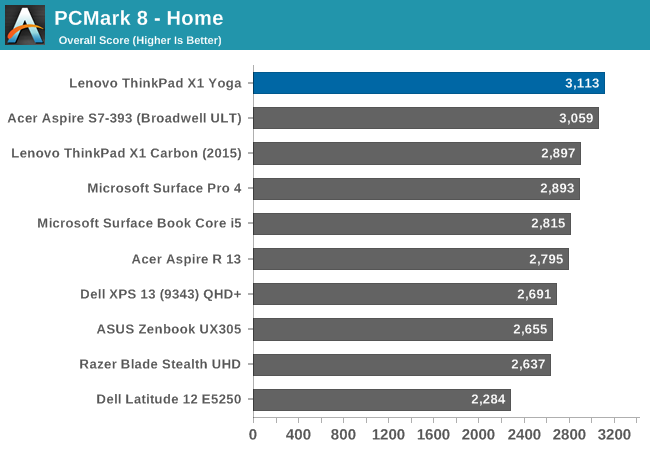
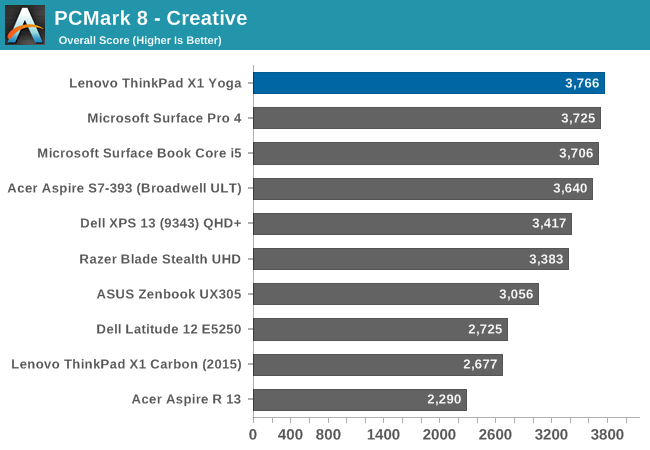
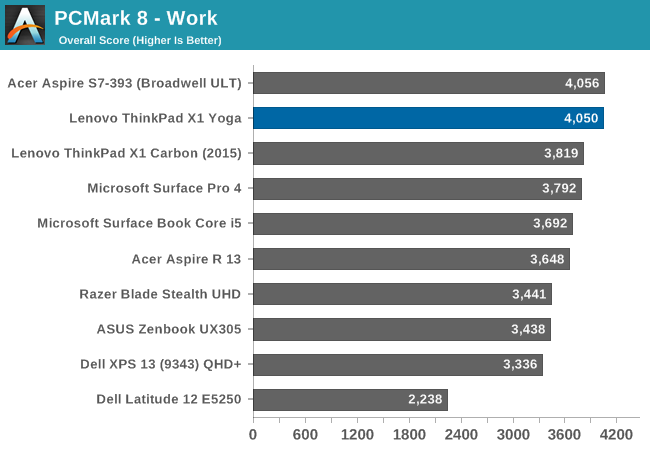

Futuremark’s PCMark tests attempt to replicate real-world workloads, with lots of burst work and some sustained work with gaming and such. The Skylake X1 Yoga shows a nice performance gain over Broadwell here.
Cinebench

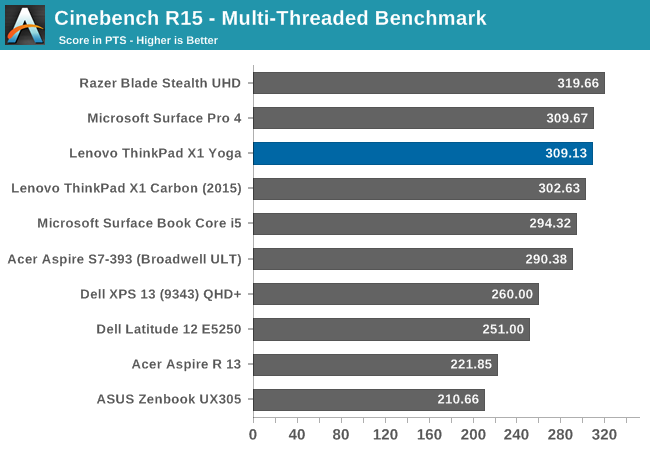
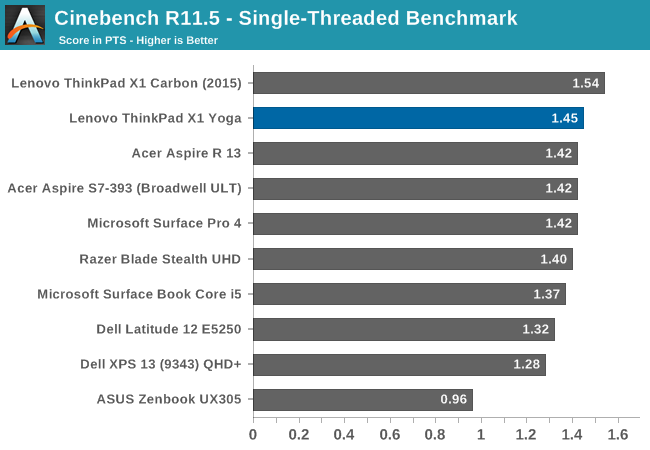
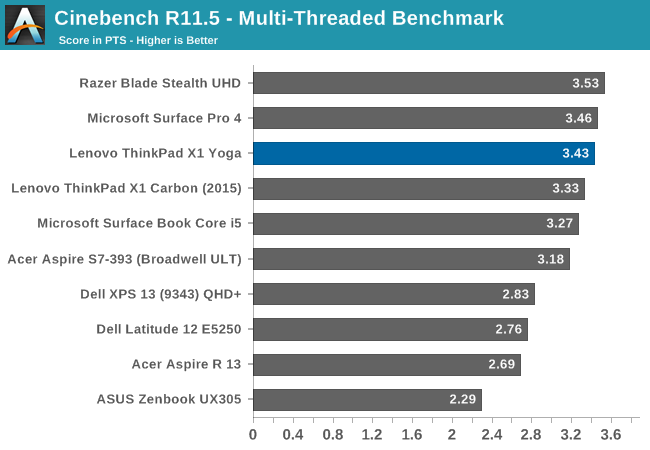
Unlike PCMark, Cinebench is a pure CPU task, with 100% CPU load for the duration of the test. There are both single-thread and multi-thread options as well. Here Skylake’s improved features like Speed Shift have less of an impact, and the overall performance is similar to Broadwell in the X1 Carbon, but remember the X1 Carbon is the i7-5600U as well, offering a tiny bit more MHz than the i7-6500U in the X1 Yoga.
x264

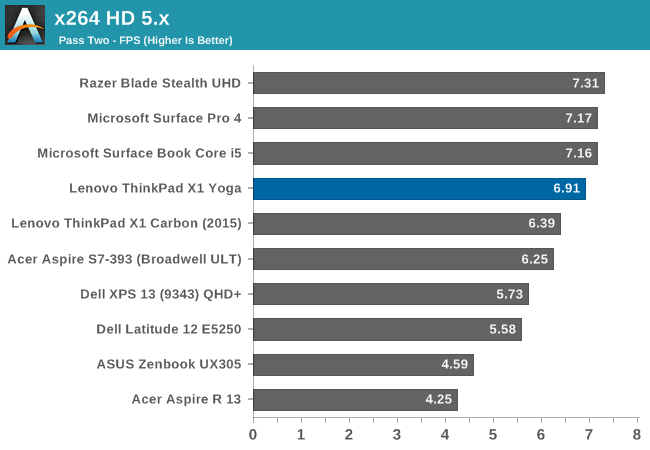
Like Cinebench, this test is a CPU bound test, where higher frequencies and more cores make a big difference. Unlike Cinebench though, Skylake does a bit better here and pulls a nice gap over Broadwell.
Web Tests
Although web benchmarks are an imperfect test, in the end we spend a lot of our digital time using the web, so it’s still important. With the launch of Windows 10, we switched from Chrome to Edge for our browser tests, and the different browsers will be pointed out in the graphs.
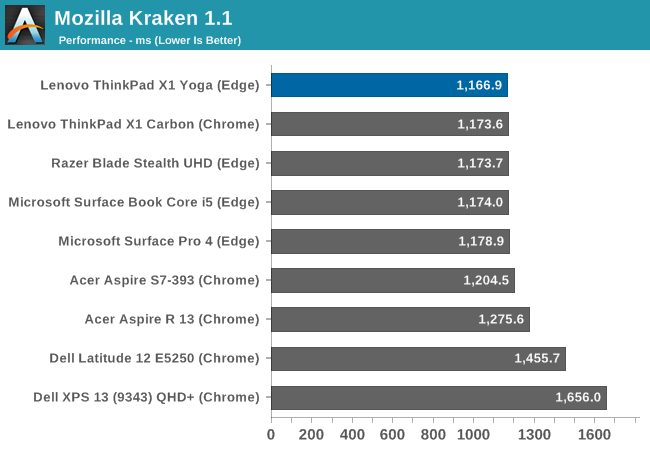
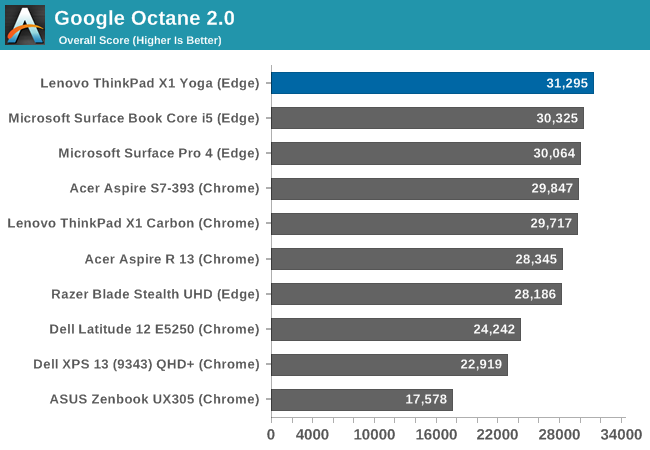
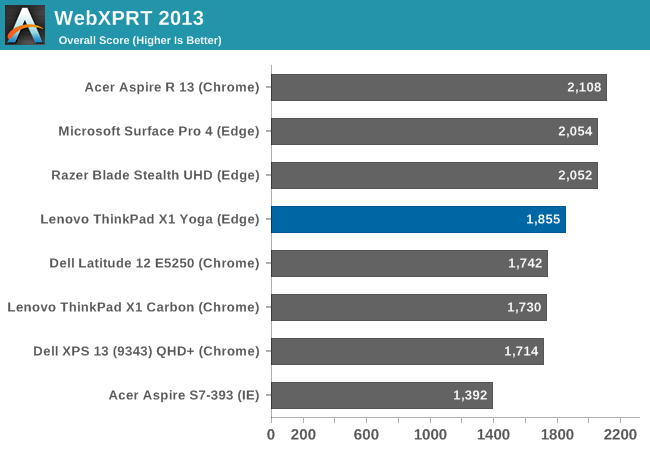
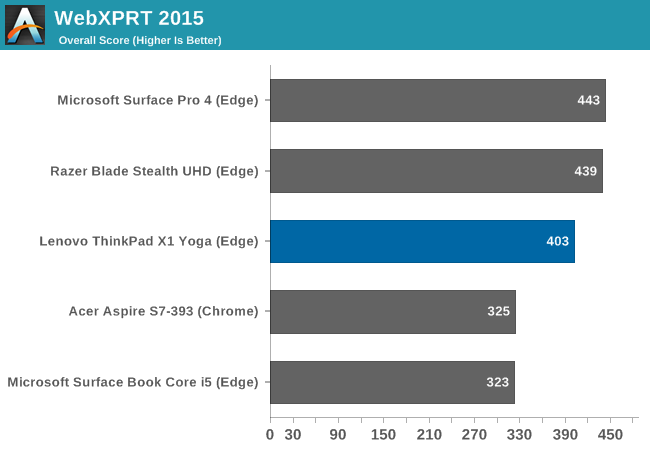
Once again, performance is pretty much in-line with other Ultrabooks, and the i7-6500U has the benefits of Speed Shift which can help out quite a bit on the bursty workloads of Javascript. It’s not a huge gain over the last generation, but it’s still an improvement.
Storage Performance
Storage is now a key selling point on laptops again. Most manufacturers are proud to say they offer PCIe storage, even if they tend to ship the cheaper TLC based drives. In the case of the X1 Yoga, we have both an LCD model and the OLED one to test, and they didn’t come with the same SSDs. The LCD model was outfitted with the Samsung PM871 which is a SATA TLC drive, and in this case 512 GB. The OLED one was a Samsung PM951, which is a NVMe TLC drive. On a premium device, it would be nice to see NVMe across the board, and preferably MLC storage, but margins tend to trump this and Samsung's TLC drives are a step above the rest. Lenovo also offers some drives with OPAL 2.0 certification, and NVMe drives up to 1 TB.
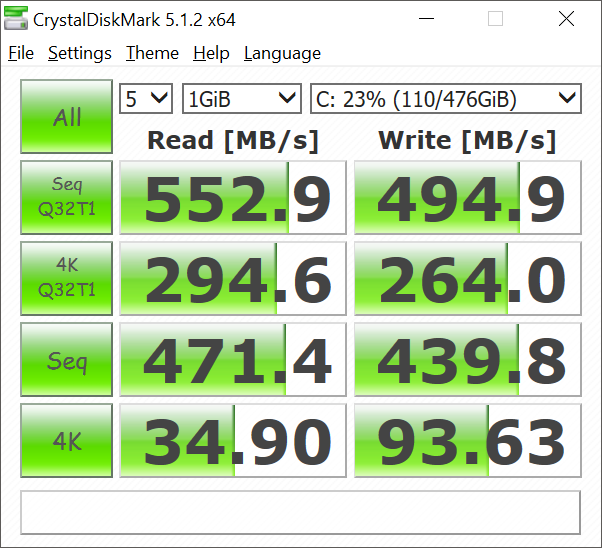
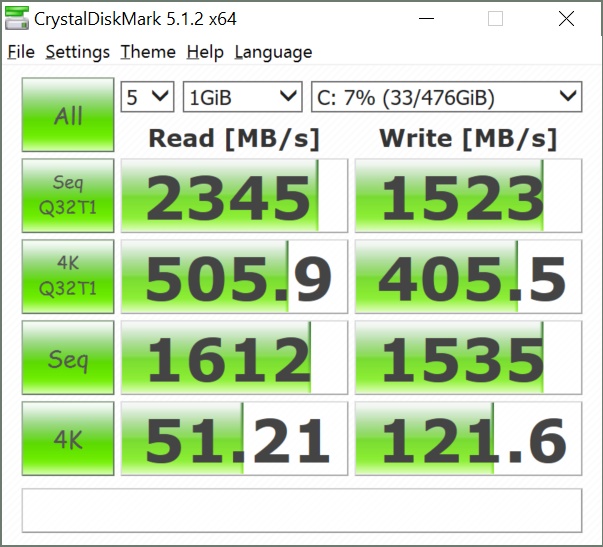
512GB SATA-based PM871 (left) vs 512GB NVMe-based PM951 (right)
The PM871 shows its SATA roots, capping out at less than 600 MB/s. The PM951 is pretty much the standard NVMe drive for the last year, and its read performance shows the big benefit of getting off SATA, although the write speeds are somewhat lower due to the TLC flash.










84 Comments
View All Comments
Inteli - Thursday, September 29, 2016 - link
Control does have a default/standard location, though. Both the ANSI and ISO standard keyboard layouts put left control in the bottom left corner.lefenzy - Thursday, September 29, 2016 - link
Well looking at wiki, the layout doesn't have a Fn key placement specification, and so having a Fn key is in itself non-standard. There's no default choice here.https://en.wikipedia.org/wiki/Fn_key#Fn_and_Contro...
Thinkpads used to have an excuse that Fn + the top right key would activate the keyboard illumination, and so having Fn in the bottom left would facilitate finding that key combo in the dark.
BrokenCrayons - Thursday, September 29, 2016 - link
The ANSI and ISO standard layouts are shown in images here:https://en.wikipedia.org/wiki/File:ANSI_Keyboard_L...
https://en.wikipedia.org/wiki/File:KB_United_Kingd...
You can read the full article here:
https://en.wikipedia.org/wiki/Keyboard_layout
Placing the Function key in the lower left corner and moving the control key that should be there to someplace else deviates from those standards. The language used in the article is indeed reasonable.
lefenzy - Thursday, September 29, 2016 - link
Well looking at wiki, the layout doesn't have a Fn key placement specification, and so having a Fn key is in itself non-standard. There's no default choice here.https://en.wikipedia.org/wiki/Fn_key#Fn_and_Contro...
Thinkpads used to have an excuse that Fn + the top right key would activate the keyboard illumination, and so having Fn in the bottom left would facilitate finding that key combo in the dark.
Brett Howse - Thursday, September 29, 2016 - link
If it wasn't an oddball placement on a Windows laptop, Lenovo wouldn't offer a switch in the BIOS to reverse their function. Even other Lenovo laptops have Ctrl on the outside. I don't think it's a big deal, and you can switch it if you do, but it's worth pointing out that it's not the same as what someone coming from a non-ThinkPad would be used to.Badelhas - Thursday, September 29, 2016 - link
Is there a real world difference between using the SSD or NVMe storage option?Brett Howse - Thursday, September 29, 2016 - link
It depends what you are doing I guess. It's not anywhere near as big of a difference as when we first got SSDs though. If you work with large files though, the read and write of something like a 950 Pro is kind of mind-boggling.cptcolo - Saturday, November 12, 2016 - link
Yes. The difference is huge. I have the X1 Yoga with the 1TB PM961 NVMe. It is simply amazing how fast it is with the supercharged SDD. It is definitely worth the price difference over the SATA SSD.fanofanand - Thursday, September 29, 2016 - link
I recently received a new laptop at work, replacing an old thinkpad. It's weight is similar but is half the thickness. Battery life increased from 95 minutes to 8 hours. I was a believer in battery life over thin, but it seems like they can finally match the two together, assuming you aren't trying to game on battery. This is a really cool device with a really high price. They will sell plenty, but not to me. If they had a version around $1,000 with a few less bells and whistles, it would be a game changer.snakyjake - Thursday, September 29, 2016 - link
Is the camera an Intel RealSense camera for biometric facial recognition?